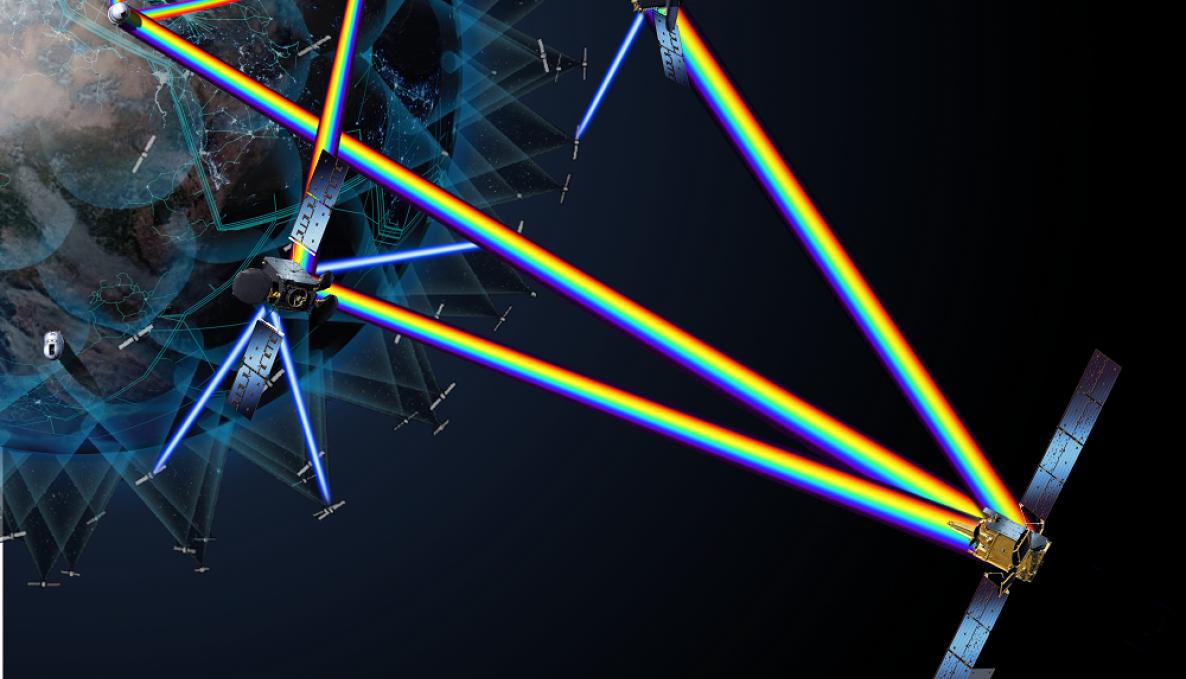Towards the TLC of the future. The first study phase of ESA's HydRON project, in cooperation with Sant’Anna School, has been successfully completed. Fiber in the sky for connectivity services thanks to laser communications

Thales Alenia Space, a joint venture between Thales (67%) and Leonardo (33%), has successfully completed the first study phase of the European Space Agency's (ESA) HydRON (High-thRoughput Optical space Network) project, in cooperation with Sant’Anna School, in particular TeCIP Institute (Institute of Communication, Information and Perception Technologies) Laser communications are revolutionising satellite communications and ESA’s HydRON optical network will seamlessly link satellites to fiber networks on the ground, enabling reliable, instant connectivity for European citizens across the world. HydRON is a high-throughput optical space network and forms part of ESA's ScyLight programme for secure and laser communication technology.
This first phase, HyPha Study, defined early system requirements and explored network architectures, as well as the technologies necessary for future implementation. Subsequently, activities will be carried out to build first IOD (In-Orbit Demonstrator) flight demonstrators to test and mature space optical network solutions for satellite and terrestrial operators usage, that will be operating in the future market.
For this study, Thales Alenia Space, reinforced by its expertise in the production of optical technologies for space developed in Zurich, coordinated a work group, involving Telespazio, a joint venture between Leonardo 67% and Thales 33%, as a satellite operator, Open Fiber as the “wholesale-only” infrastructure operator, providing access and transport networks, entirely in optical fiber to more than 280 operators in Italy, Sant'Anna School, an academic institution with expertise in free space optical communication systems FSO (Free Space Optics). At Scuola Sant'Anna, the research activity has been coordinated by Giulio Cossu, assistant professor at the TeCIP Institute (Institute of Communication, Information and Perception Technologies) of the Sant'Anna School.
This initiative contributes to Europe's technological independence in connectivity services through space (Fiber in the sky / Internet beyond the Cloud(s)) and to the expansion of its capacities towards new types of services and applications (Cloud in the sky, IP Routing On-Board Satellite, Extra-territorial service capacities…).
About optical satellite connectivity
In FSO, lasers are used to establish a transmission link with optical receptors (photodiodes) for reception. One advantage of using lasers, or better direct and collimated links, is that these links are very difficult to intercept, assuring a naturally very secure communication process. But above all, by exploiting the technique of wavelength multiplexing commonly used in terrestrial fiber connections, it is possible to create FSO links with capacities of hundreds of Gbit/s. This is much higher than bandwidths of current radio-frequency technologies, thus allowing to meet increasing network bandwidth requests. Moreover, satellite connectivity is always available in its coverage area and does not require complex infrastructure to be deployed (poles, lines, exchanges…).
Recent studies show that the ultra-broadband digital connectivity demand increased significantly during the past years, and the COVID-19 pandemic has shown that it is now essential for families and businesses to have fast data connections. By integrating seamlessly with the terrestrial optical fiber networks, satellite systems employing FSO technologies will empower telecommunications infrastructures to be able to meet growing demand, support 5G and to enable new, innovative applications using Artificial Intelligence and Internet-of-Things.



